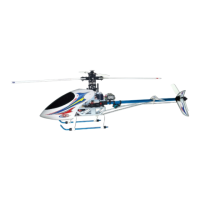
Do you have a question about the Walkera 60# and is the answer not in the manual?
| Brand | Walkera |
|---|---|
| Model | 60# |
| Category | Motorized Toy Car |
| Language | English |
General statement regarding the product's nature, installation, and operation.
Critical safety precautions and responsibilities for operating the RC helicopter.
Pre-flight checks and procedures to ensure safe operation and prevent accidents.
Overview of the WK-2601 transmitter's capabilities and technology.
Detailed explanation of the WK-2601 transmitter's functions and controls.
Details on the DIP switches on the transmitter and their functions.
Instructions for battery mounting and the code pairing process.
Overview of the RX2701 receiver's capabilities and how its channels function.
Guide to connecting channels and important safety considerations for the receiver.
Explanation of the Electronic Speed Controller's role and how to connect it.
Details on servo specifications and how to connect and adjust them.
Overview of the WK-G011 gyro's features and technical specifications.
Identification of gyro components and interpretation of LED status indicators.
Technical data and key features of the GA005 balance charger.
Instructions for operating the charger and maintaining battery packs.
Procedures for installing the battery and adjusting the helicopter's center of gravity.
Checking the toothed belt and the process of powering on the helicopter.
Guide to inspecting and adjusting the helicopter's swashplate for proper flight.
Adjusting servo exponential curves to improve flight control feel.
Adjusting PIT angle for controlled ascending and descending flight.
Adjusting servo extent and other parameters on the receiver.
Inspection and adjustment of main rotor blades for balance and tracking.
Inspection and adjustment procedures for the tail rotor blades.
Steps for safely concluding a flight session.
Answers to common questions regarding helicopter operation and troubleshooting.
Explanation of flight control movements using Mode 1 (throttle stick right).
Explanation of flight control movements using Mode 2 (throttle stick left).
How to adjust rudder, elevator, and aileron trims for stable flight.
Guidance and steps for beginner pilots practicing flight skills.
Advanced maneuvers and practice routines for experienced pilots.
